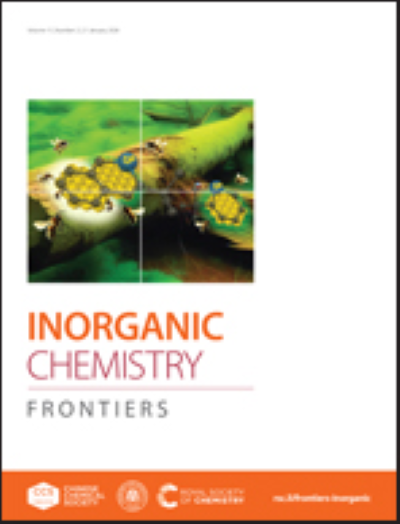Taming a Silent Killer: Uncovering the Role of Excited States and Uncoordinated Selenium Moieties in the CO Photorelease Mechanism of Manganese(I) Carbonyl Compounds
IF 6.1
1区 化学
Q1 CHEMISTRY, INORGANIC & NUCLEAR
引用次数: 0
Abstract
Manganese carbonyl compounds can release CO when exposed to light, potentially becoming photochemically activated CO-releasing molecules (photoCORMs). Several studies have demonstrated the behavior in the ground state when irradiated with light. However, much remains to be discovered about the chemistry of photoCORMs with uncoordinated ligand moieties and the excited states of these compounds. This research fills that gap via the synthesis, characterization, and study of the excited states of five manganese(I) complexes containing a potentially bi- or tridentate ligand framework (κn- Se,N,Se; n=2,3). The obtained compounds, [Mn(κ2-L)(CO)3Br], retain a uncoordinated selenium-donor moiety. CO-release assays using violet light revealed the formation of a biscarbonyl intermediate. TD-DFT calculations showed that in [Mn(κ2-L)(CO)3Br], the first two excited states are involved. Generalized Kohn-Sham energy decomposition analysis indicated that the strongest metal-carbonyl interaction in the ground state (carbonyl trans to bromide) became the weakest in the excited state. DFT calculations confirmed the coordination of free selenium upon CO loss, forming [Mn(κ3-L)(CO)2Br], for which two configurational isomers (meridional and facial) may occur, with the first being more favored. The total interaction energies of the two carbonyls are similar, indicating the release of both. The Potential Energy curves indicate that the excited states involved are dissociative in nature.求助全文
约1分钟内获得全文
求助全文
来源期刊

Inorganic Chemistry Frontiers
CHEMISTRY, INORGANIC & NUCLEAR-
CiteScore
10.40
自引率
7.10%
发文量
587
审稿时长
1.2 months
期刊介绍:
The international, high quality journal for interdisciplinary research between inorganic chemistry and related subjects
 求助内容:
求助内容: 应助结果提醒方式:
应助结果提醒方式:


